Last Updated: April 2024
The usage of the knowledge base is expanding like a wildfire. In the year 2012, the usage rate of the knowledge base was only 67%. Whereas, in 2018, the usage rate of the knowledge base is 81%.
Shelf Knowledge Base is a platform that uses AI to provide on-demand answers to the questions that block customer and employee success.
However, it has some limitations. Shelf doesn’t provide a free trial option or a free version and their pricing is custom.
Before investing in such a platform let’s have a look at the 10 best Shelf Knowledge Base Alternatives and Competitors that you can try exploring!
Shelf Knowledge Base Alternatives: Pricing Comparison
Shelf Knowledge Base Alternatives |
Price Starts At |
Pricing Limitations |
| Saufter | $99/month |
|
| Guru | $5/month |
|
| Atlassian Confluence | $5/50/month |
|
| Bloomfire | $25/month |
|
| Slab | A free plan is available. Paid plans start at $6.67/month. |
|
| ProProfs Knowledge Base | $30/month |
|
| HelpCrunch | $12/month |
|
| Helpjuice | $120/month |
|
| Intercom | $38/month |
|
| Freshdesk | A free plan is available. Paid plans start at $15/agent/month. |
|
10 Best Shelf Knowledge Base Alternatives
- Saufter
- Guru
- Atlassian Confluence
- Bloomfire
- Slab
- ProProfs Knowledge Base
- HelpCrunch
- Helpjuice
- Intercom
- Freshdesk
1. Saufter

Saufter is a multi-channel customer service help desk that enables your entire support system to run efficiently on a single platform, with all customer information available to your support team. This Shelf Knowledge Base alternative is cost-effective and quick, and most agents can get started with Saufter with little to no training. Provides AI-suggested replies based on previous tickets handled to improve response time and productivity. The Saufter also has other features such as social media integration, a live chat widget, an integrated returns center, etc.
Pros:
- Saufter offers email support integration as well as AI-drafted emails. This can significantly reduce both your email traffic and workload.
- You can integrate a live chat widget into your website to allow visitors to raise issues in real-time.
- The one-click integration option for e-commerce platforms like Shopify, Magneto, and Woo-commerce, among others, is very convenient.
Cons:
- Users discovered some workflow issues, which have since been resolved.
2. Guru

Guru is a company wiki that helps you in your workflow, so the information you need to do your job is constantly at your fingertips. Guru Knowledge Base centralizes all your business information to make work easier for your team.
Pros:
- It enables easy search and integrates with slack.
- It has a single repository for company-wide communication.
Cons:
- It is an internal wiki tool suitable only for internal use.
- Not competent enough to build a self-service help center for your customers.
- Its search function is a disappointment as it slows down on occasions when you do not type the exact keywords in the search bar.
- Integration is very limited.
3. Atlassian Confluence
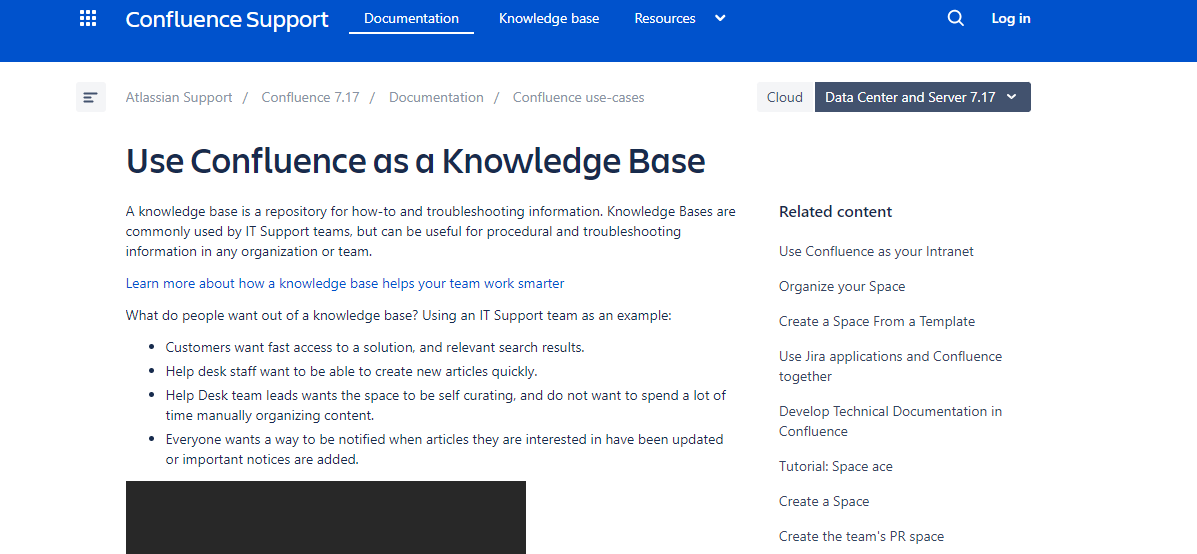
Confluence is a web-based corporate wiki developed by Australian software company Atlassian. It gives your team one place to share, find, and collaborate on information they need to get work done.
Pros:
- Updated notifications to the collaborators are another trait of Confluence. When new updates are made, notifications are sent to the collaborators at the moment itself. This makes sure that the knowledge base is extensive, detailed, reliable, and timely and helps build an efficient feedback loop for the collaborators.
- Another important characteristic of Confluence is seamless integration. Integrations can help in any matter like making better charts, connecting to the Google Suite of products, and adding gifs to your documents. The usage of integrations improves the content vibrantly and aids in future consumption.
Cons:
- Confluence has a problem with its ROI. It is slower to reach ROI
- Search has been one of the biggest challenges for Confluence users.
- Dependency on plugins is a problem associated with Confluence.
4. Bloomfire

Bloomfire is a knowledge management platform to grow your collective intelligence. Its cloud-based knowledge management software assists businesses in collecting, connecting, and democratizing the knowledge and insights that prevail across the entire organization.
Pros:
- It provides you with one central, searchable place for information and insights. Your team members can do your best work, no matter where, when, or how you’re working.
- The search option is powered by AI which makes it faster to access information.
Cons:
- The tool doesn’t offer knowledge base templates or built-in templates.
- Bloomfire doesn’t provide a feature to improve SEO.
- It is built only for internal use.
5. Slab
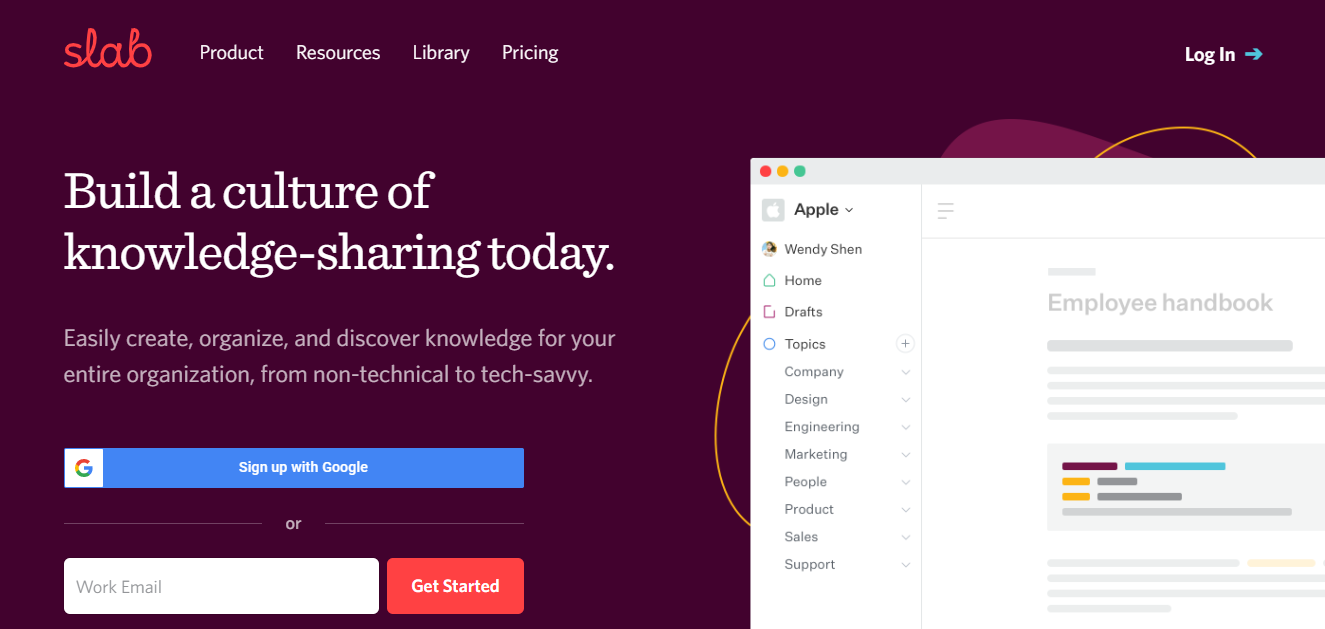
Slab is one of the top Shelf Knowledge Base alternatives. This knowledge-sharing software allows teams to collaborate on company information and ease the work processes. It easily creates, organizes, and discovers knowledge for your entire organization.
Pros:
- Slab has a crisp and organized user interface and an easy-to-use editor with lots of integrations.
- It has good templates, document categorization, and sharing features.
Cons:
- Lack of formatting options and outdated layouts.
- No options for the embedding of PDFs and other file formats.
- Caters only to the English language limiting companies to linguistically diverse groups.
6. ProProfs Knowledge Base
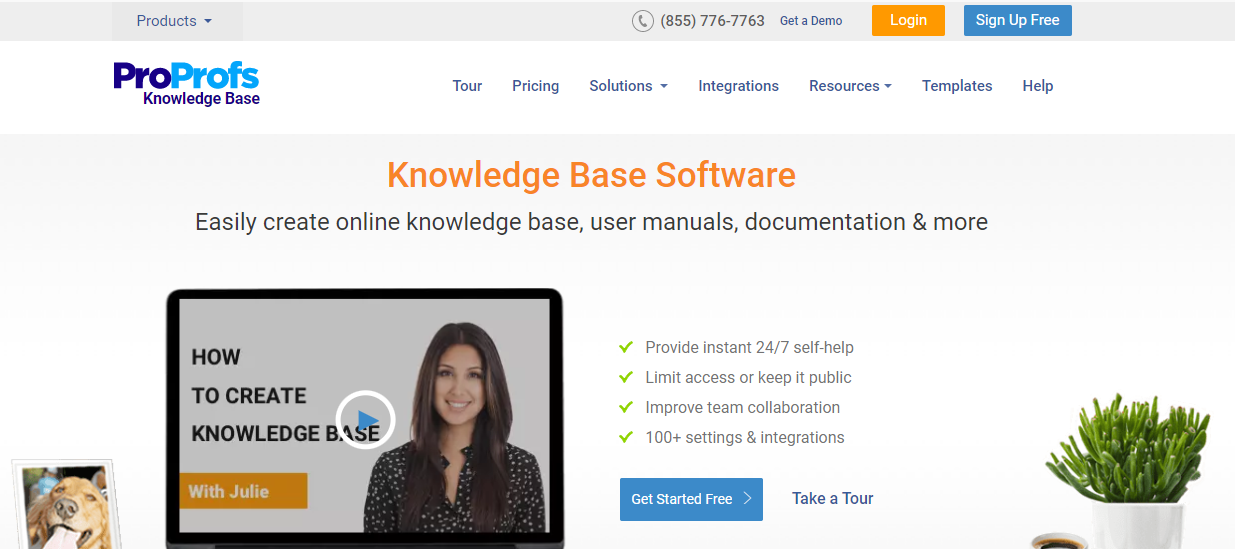
ProProfs Knowledge Base can be set up as a self-service help center for customers. The ultimate aim of the ProProfs Knowledge Base is to make it easy for people to resolve issues on their own without asking for help.
Pros:
- Provide customers with 24×7 access to help content and prevent them from raising tickets for basic issues. This reduces ticket inflow and lets agents focus on crucial customer problems.
- With its online documentation and user manuals, you can learn what your customers are searching for but not finding answers to and keep your content revised and updated.
Cons:
- ProProfs Knowledge Base doesn’t have an option to co-author and co-edit articles.
- The company doesn’t provide a mobile app for ProProfs Knowledge Base software.
7. HelpCrunch
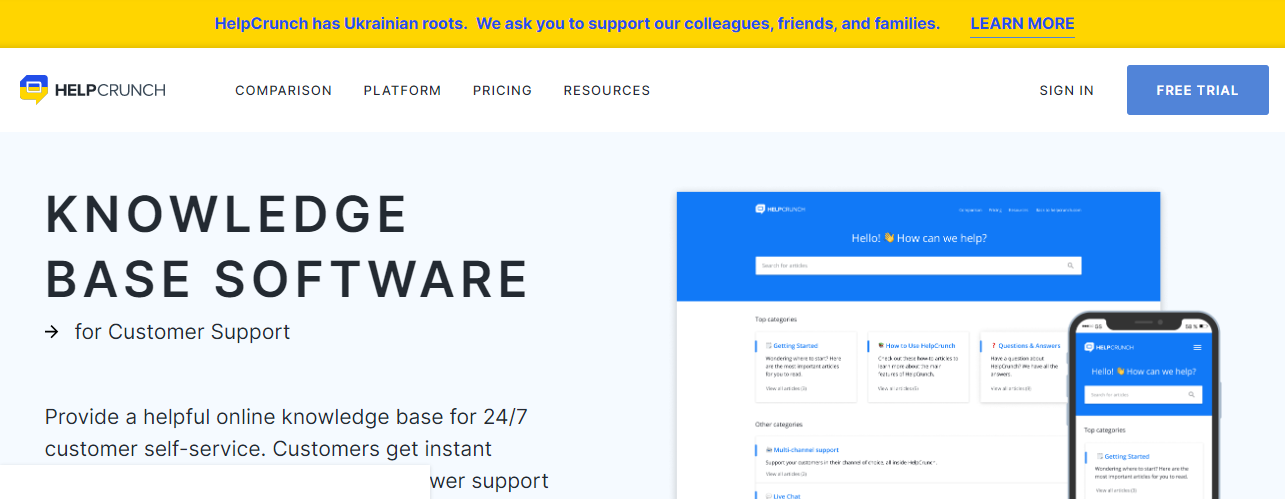
HelpCrunch is a cloud-supported tool that provides a knowledge base, live chat, email marketing, and a help desk. It allows you to stay connected with customers across the web, mobile, chat, email, and self-service.
Pros:
- The search option is very useful. It provides quick and smart suggestions.
- Your knowledge base can be customized using HelpCrunch.
- Before final publishing, you get instant previews.
Cons:
- There is no desktop app for the software.
- HelpCrunch is not multilingual.
- It provides very limited insights.
8. HelpJuice

Helpjuice is used by many companies as a knowledge database. It’s a go-to place to find important information stored by the company’s departments. It is an easy-to-use knowledge base software to scale up your customer support and collaborate better with your team.
Pros:
- With Helpjuice you can customize every knowledge base.
- Search engines are built from the ground up for knowledge base software and they constantly improve and update their search engine according to the needs.
- They also have comprehensive analytics to scrutinize and enhance performance.
Cons:
- Media files’ storage is problematic. There is no folder system or file manager for images and other media files, so they quickly get lost in an endless feed.
- Knowledge base templates (ready-made) are not available.
- Helpjuice provides only limited third-party integrations.
9. Intercom
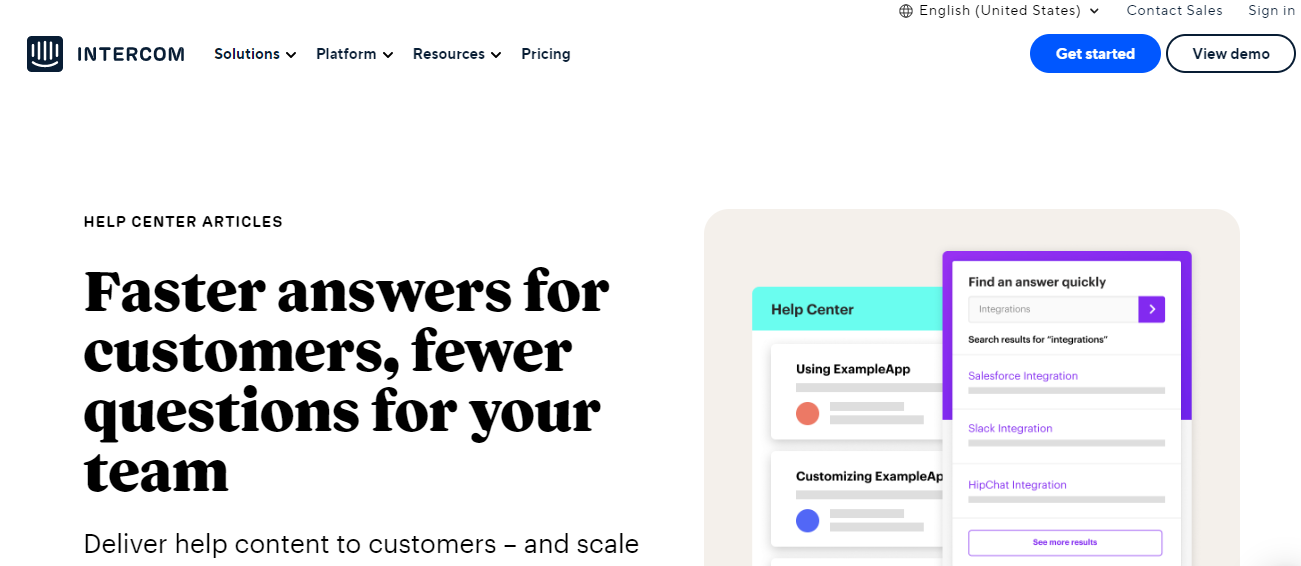
With Intercom’s integrated knowledge base you can deliver content to customers and scale your support. You can create multilingual articles for your global customers for faster self-serve answers.
Pros:
- Easy to set up. Easily integrates with your website or system.
- Diverse and continually growing knowledge base.
Cons:
- Customer support is often slow and unresponsive.
10. Freshdesk

Freshdesk is a Shelf Knowledge base alternative that comes with a set of features that makes it an all-inclusive customer service tool for companies across industries. It offers you a knowledge base as well as a help desk, and chat.
Pros:
- They have a workflow approval system to review content.
- Freshdesk converts agent responses into knowledge base articles.
- It has several in-app collaboration features that make it easy for team members to work together and resolve tickets.
Cons:
- Freshdesk doesn’t provide an option to export your entire knowledge base.
- Co-editing and internal comments are not available in Freshdesk. Also, they don’t support multi-branding.
- It is not designed for eCommerce brands. Ecommerce brands have specific requirements such as deep platform integrations, customer information, changing order dates, and more which are not available in Freshdesk.
Conclusion
Before choosing a Shelf knowledge base alternative, you need to be aware of your own business goals and objectives. Once you’re clear about your aims, figure out which out of these best shelf knowledge base alternatives checks out the most boxes and aligns with your business needs. Saufter is trusted by 1000+ brands worldwide and could be the best option for you.
What are you waiting for? Start Your Free Trial Now!








